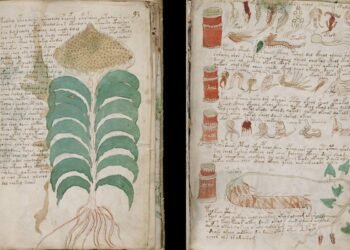Archaeologists have issued an urgent appeal to preserve the remains of the ancient Temple of Bel, which suffered extensive damage at the hands of the Islamic State militant group (ISIS). The Temple of Bel is located in the ancient city of Palmyra, a UNESCO World Heritage site situated in the Syrian Desert, near a fertile oasis.

The earliest history of Palmyra dates back to prehistoric times, reaching its economic and political peak during the first three centuries of the first millennium. The Temple of Bel, founded in the first century, is the main sanctuary of Palmyra. Dedicated to the Mesopotamian god Bel, it was constructed on a tell—an artificial mound of superimposed archaeological remains—dating back to the third to second millennium B.C. The temple represents a remarkable blend of ancient Near Eastern and Greek architectural styles. Completed in the second century, it was later converted into a church in the fifth century and subsequently into a mosque during the Islamic period. Its vast courtyard even served as a residential shelter for centuries.
In 2015, ISIS detonated explosives at the temple, causing significant damage but not completely destroying the structure. The Syrian army liberated Palmyra from ISIS in 2016, only for the city to fall back under ISIS control later that year before being recaptured by the army in 2017. Specialists who visited the site after its liberation confirmed that while the walls of the cella (the inner temple chamber) had collapsed, and many columns had fallen, elements such as the large western gate and the temple’s foundations remained intact.
In their paper published in the Bulletin of the American Society of Overseas Research, archaeologists Maamoun Abdulkarim and Jacques Seigne emphasized the urgent need to preserve the temple and facilitate the return of the local population. “This paper emphasizes the critical need to carry out emergency work to halt the deterioration of this significant World Heritage Site,” the authors wrote.

The researchers argued against a full reconstruction of the temple, citing the extent of the damage and financial constraints. Instead, they advocate for selective rehabilitation of certain elements to preserve significant architectural features. “First, we have a duty to secure the standing remains of the monument, ensuring that the damage wrought by the explosion does not lead to further collapse,” the authors wrote. They also stressed the importance of recording, gathering, and conserving the fragments scattered by the blast to prevent further loss.
“This community is crucial to the success and sustainability of any strategic planning, not only because they are a source of labor and practical expertise, but also due to their collective memory and ownership of the site. They are a part of its story,” the researchers wrote. The residents’ contribution is essential for rebuilding Palmyra’s infrastructure and reviving its oasis, particularly the water system and palm and olive trees.
The current condition of the oasis and its trees has also suffered due to the absence of the local population. Without people to care for and revive it, the oasis is drying up. Abdulkarim and Seigne call on national authorities and international partners to establish a plan to reunite the local population with their city to aid in the rehabilitation of the damaged monuments.
“Palmyra has witnessed the worst of times—the authors’ plea is for global cooperation and a shared ambition to protect the Temple of Bel, ensuring the return of a far more positive narrative,” they concluded.























Disclaimer: This website is a science-focused magazine that welcomes both academic and non-academic audiences. Comments are written by users and may include personal opinions or unverified claims. They do not necessarily reflect the views of our editorial team or rely on scientific evidence.
Comment Policy: We kindly ask all commenters to engage respectfully. Comments that contain offensive, insulting, degrading, discriminatory, or racist content will be automatically removed.
Not only Palmyra
russian occupants in Crimea have completely destroyed an authentic monument of UNESCO Heritage — the Tavrian Chersonesus, ancient city.